#python full course
Photo
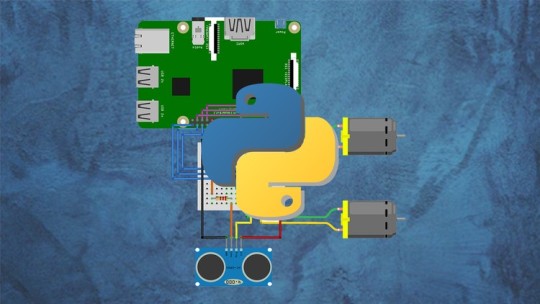
Raspberry Pi, Python, and Internet of Things (IoT) Project ☞ http://learnstartup.net/p/1601kcJL8 #python HksbEGrMt
#python#python tutorial#python language#python full course#python course#learn python#learn python programming#python tutorial for beginners
10 notes
·
View notes
Text

"Empower your career journey with our Placement-Oriented Python Course! 🚀 Elevate your coding skills and boost your employability.
Get ready to land your dream job
✅Certified Instructor with industrial experience
✅Pre & Post Assessment
✅Study Material
✅Course Completion Certification
✅Guidance for career path
✅Additional Techy-Learner discount for Next Level Course
✅Free AI foundational course with Course Completion
✅Certification from Microsoft Placement/Internship Opportunities for Candidates with outstanding performance
#pythoncourse #pythonfullcourse #freepythoncourse #freeonlinecourseswithcertificate #freepythoncourseswithcertificate #googleitautomationwithpythonprofessionalcertificate #python #freecertificatecourse #pythoncertificationcourse #freepythoncoursewithcertificate #pythonfreecertificationcourse #pythoncertification #googlepythoncertificate #freepythoncertificationcourses #pythonforbeginners #certificate #pythoncoursefree
#python course#python full course#free python course#free online courses with certificate#free python courses with certificate#google it automation with python professional certificate#python#free certificate course#python certificate course
0 notes
Text
Master Python with our Comprehensive Online Course | Codinius

In today's rapidly evolving technological landscape, mastering programming languages is a crucial step toward unlocking a world of endless possibilities. Among these languages, Python has risen to prominence as a versatile and powerful tool for developers, data scientists, engineers, and enthusiasts alike. To empower individuals in their journey of becoming proficient Python programmers, our comprehensive online Python course stands as an invaluable resource.
Python's popularity can be attributed to its elegant syntax, readability, and an extensive array of libraries and frameworks that cater to various domains, including web development, data analysis, artificial intelligence, and more. The "Master Python with our Comprehensive Online Python Course" serves as a guiding light through this multifaceted language, providing learners with a structured and holistic approach to understanding its nuances.
One of the standout features of this python full course is its meticulous design, which takes into account both beginners and those with prior programming experience. The course starts by building a solid foundation, introducing newcomers to Python's basic syntax and concepts. From variables and data types to conditional statements and loops, learners are carefully guided through each fundamental element, ensuring a clear understanding before progressing to more advanced topics.
For individuals already acquainted with programming, the course offers an accelerated journey through the basics, allowing them to quickly grasp Python's unique characteristics and swiftly transition to its more intricate aspects. This adaptability in pacing caters to a diverse audience, recognizing that learning is not a one-size-fits-all experience.
As the course delves deeper, learners are introduced to the diverse domains in which Python excels. From web development using frameworks like Flask and Django to data manipulation and visualization using libraries like NumPy, pandas, and Matplotlib, the python course online showcases the language's versatility. Furthermore, as the realms of artificial intelligence and machine learning continue to reshape industries, the course offers a comprehensive introduction to these fields, utilizing libraries such as TensorFlow and scikit-learn.
Practicality lies at the heart of effective learning, and the course embraces this philosophy wholeheartedly. Each module is enriched with hands-on projects and coding exercises that challenge learners to apply the concepts they've acquired. These real-world scenarios not only solidify understanding but also encourage problem-solving skills and creativity, mirroring the challenges one might encounter in actual programming endeavors.
The course's comprehensive nature extends beyond the lessons themselves. Recognizing the importance of a supportive community, learners are granted access to dedicated forums and chat groups throughout the python full course where they can collaborate, share insights, and seek guidance from both peers and experienced instructors. This sense of community fosters an environment of continuous growth and networking, transforming the solitary act of online learning into a collaborative and enriching experience.
Furthermore, the python course online is built with flexibility in mind, acknowledging the diverse lifestyles and schedules of its learners. With on-demand access, individuals can learn at their own pace, fitting the course seamlessly into their daily routines. Whether a student, a professional looking to upskill, or someone exploring a passion for programming, the course accommodates all, ensuring that barriers such as geographical location or time constraints do not hinder the pursuit of knowledge.
In conclusion, the "Master Python with our Comprehensive Online Python Course" emerges as a beacon for those embarking on a journey of Python mastery. By seamlessly catering to beginners and experienced programmers alike, the course establishes a strong foundation while exploring the language's vast applications. Through its hands-on approach, it equips learners with the skills needed to confidently tackle real-world challenges. Moreover, the sense of community it fosters transcends the virtual realm, uniting learners on a collective path of growth and exploration. In a world increasingly driven by technology, this python course doesn't merely teach Python—it empowers individuals to shape the future through code.
0 notes
Text
#python course in Rohini#python course#learn python#python class#python certification#python training institute in Rohini#python training#python classes near me#python full course#python training institute#advanced python course#python institute#python coaching near me#google python course#python programming classes#best python training#python course with placement#how to find best institute for python
0 notes
Text
Top best platforms hosting python codes
python
Python is a versatile programming language that is popularly used for web development, data analysis, machine learning, and artificial intelligence. If you are a Python developer, you need a reliable platform to host your codes, collaborate with others, and manage your projects. In this blog post, we will discuss the top best platforms hosting Python codes.
GitHub
GitHub is one of the most…
View On WordPress
#как выучить python#learn python#learn python programming#уроки python#python#python 2020#python 3#python basics#python coding#python course#python crash course#python для начинающих#python for beginners#python for everybody#python for everyone#python from scratch#python full course#python language#python programming#python programming language#python programming tutorial#python tutorial#python tutorial for beginners
1 note
·
View note
Text
#python#learn python#python tutorial#python for beginners#python course#python tutorial for beginners#python basics#python full course#learn python programming#python programming#python 3#python programming language#python language#python 2020#python crash course#python for everyone#python for everybody#python right now#python for hackers#python from scratch#python programming tutorial#уроки python#you need to learn python right now#python уроки#programing#coding
0 notes
Text
youtube
Python Numpy Tutorials
#numpy tutorials#numpy for beginners#numpy arrays#what is array in numpy#numpy full array#how to create numpy full array#what is numpy full array#how to use numpy full array#uses of numpy full array#how to define the shape of numpy array#python for beginners#python full course#numpy full course#numpy python playlist#numpy playlist#complete python numpy tutorials#numpy full array function#python array#python numpy library#how to create arrays in python numpy#Youtube
0 notes
Text
Python Basics
This course introduces the basics of Python 3, including conditional execution and iteration as control structures, and strings and lists as data structures. You'll program an on-screen Turtle to draw pretty pictures. You'll also learn to draw reference diagrams as a way to reason about program executions, which will help to build up your debugging skills. The course has no prerequisites. It will cover Chapters 1-9 of the textbook "Fundamentals of Python Programming," which is the accompanying text (optional and free) for this course. The course is for you if you're a newcomer to Python programming, if you need a refresher on Python basics, or if you may have had some exposure to Python programming but want a more in-depth exposition and vocabulary for describing and reasoning about programs. This is the first of five courses in the Python 3 Programming Specialization.

#python tutorial#python tutorial for beginners#learn python#python course#python full course#learn python programming#python for beginners#python programming#python programming tutorial#python crash course#python language#python basics#python 3#python from scratch#python for everybody#software development#getting started with python#what can you do with python#you need to learn python right
0 notes
Text
Master Data Analytics: Navigate Insights with Yess InfoTech
Discover data analytics at Yess InfoTech. Our course covers descriptive, predictive, and prescriptive analytics, decoding trends for informed decisions. Explore real-time analytics, prioritizing ethics in data handling.
Conclusion:
In today's digital era, Yess InfoTech offers a transformative data analytics course. Decode trends, predict outcomes, and prioritize ethics in decision-making. Join us to unlock the power of data and navigate the digital landscape confidently.

#marketing#programming#success#software#data analytics#data analysis#datascience#full stack course#python
2 notes
·
View notes
Text


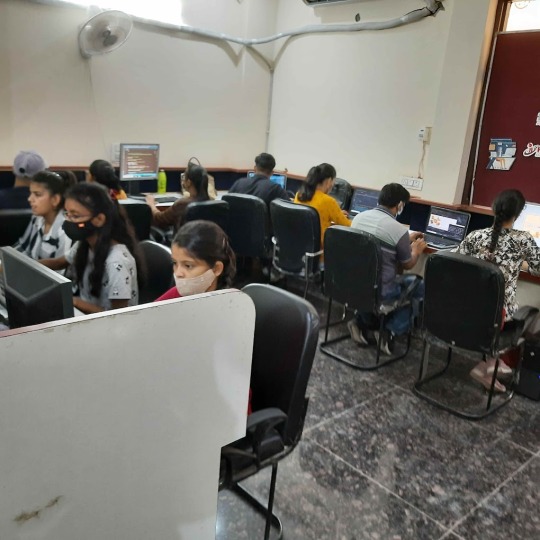

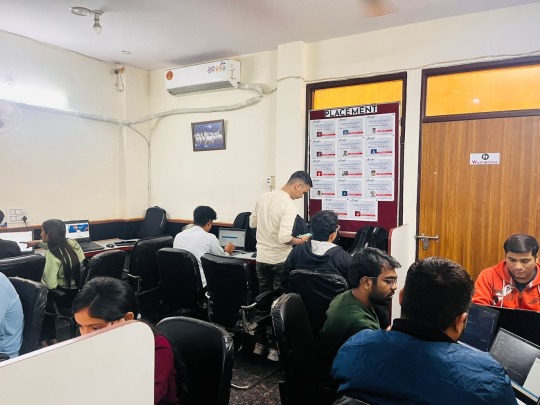
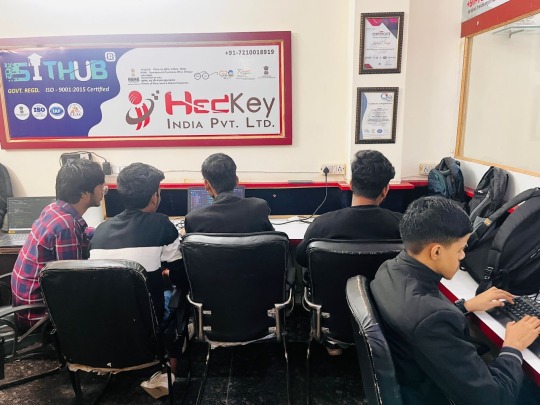

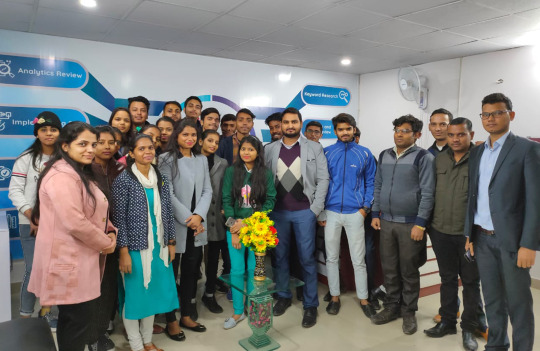









SITHUB
SITHUB is a leading educational institution that is dedicated to providing high-quality online and offline courses to students of all levels. Our courses are designed to equip you with the necessary skills to excel in the digital world. With a wide range of courses including web designing, web development, digital marketing, python development, full stack development, Mern stack development, and more, we have something for everyone.
Our courses are carefully crafted and regularly updated to keep up with the ever-changing technology landscape. We understand that every student has unique learning needs, which is why our courses are designed to be interactive and engaging, allowing you to learn at your own pace. Our experienced instructors provide personalized attention and support to ensure that you have the best possible learning experience.
At SITHUB, we believe in providing a comprehensive learning experience that goes beyond just theoretical knowledge. That's why our courses also include practical exercises, case studies, and real-world projects to help you apply your skills and build a strong portfolio. Our aim is to not just teach you the technical skills, but also to help you develop a deeper understanding of the subject matter.
We also offer one-on-one tutoring and support to our students, so you can get personalized guidance and clarification whenever you need it. Our flexible class schedules and affordable course fees make it easier for anyone to access quality education. With SITHUB, you can learn from anywhere, at any time, and at your own convenience.
Join us today and take the first step towards a successful career in the digital world. With our expert instructors, comprehensive courses, and personalized support, you can be confident that you are getting the best education possible. Choose SITHUB and unlock your potential for success.
Thanks
SITHUB
Address: 32 Gramsabha, Dwarka Mor Metro Station, near by Pillar No. 774, Sewak Park, Uttam Nagar, New Delhi, Delhi 110059
Phone: 072100 18919
Website: https://www.sithub.in/
Facebook Link: https://www.facebook.com/sithubtraining
Instagrame: - https://www.instagram.com/sithubtraining/
Youtube: - https://www.youtube.com/@sithubtraining
Keyword –
Web Designing Course - https://www.sithub.in/course/Web+Designing.php
Web Development Course - https://www.sithub.in/course/Web+Development.php
Full Stack Development Course - https://www.sithub.in/course/Full+Stack+Development.php
Digital Marketing Course - https://www.sithub.in/course/Digital+Marketing.php
Mern Stack Development Course - https://www.sithub.in/course/Mern+Stack+.php
Python Development Course - https://www.sithub.in/course/Python.php
Php Development Course - https://www.sithub.in/course/Php+Development.php
React Js Course - https://www.sithub.in/course/React+Js.php
#Web Designing Course#Web Development Course#Full Stack Development Course#Digital Marketing Course#Python Developer Course
1 note
·
View note
Photo
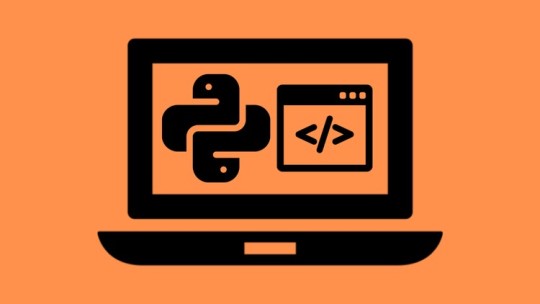
Python For Ethical Hacking: Develop Pentesting Tools ☞ http://learnstartup.net/p/kaSRY3Eb9 #python r1FbkDvUzK
#python#python tutorial#python language#python full course#python course#learn python#learn python programming#python tutorial for beginners
9 notes
·
View notes
Text
Unlock the Power of Java Programming
Java, renowned for its versatility and widespread use, is a programming language that empowers developers to build a wide range of applications. If you're looking to master Java programming and enhance your career prospects, Technolearn Training Institute in Pune offers comprehensive Java Classes in Katraj that can help you achieve your goals.
The Java classes in Katraj at Technolearn Training Institute cover all the essential concepts and techniques needed to become a proficient Java developer. From the fundamentals of Java programming to advanced topics like object-oriented programming, multithreading, exception handling, and database connectivity, the course curriculum is designed to provide a solid foundation in Java development.
Led by industry-experienced instructors, the Java Classes in Katraj at Technolearn Training Institute ensure a holistic learning experience. Through a combination of theory sessions, practical exercises, coding assignments, and real-world projects, students gain hands-on experience and develop the necessary skills to tackle Java programming challenges.
Technolearn Training Institute is equipped with state-of-the-art facilities, including well-equipped computer labs with the latest software and tools. The institute also provides access to a vast library of reference materials and resources, enabling students to explore and deepen their understanding of Java programming.
Upon successful completion of the Java Classes in Katraj, students acquire comprehensive knowledge of Java programming and gain the confidence to build robust and scalable applications. They also receive a certificate that validates their skills and enhances their employability in the competitive job market.
Technolearn Training Institute also offers placement assistance to its students. The institute has established connections with leading companies and industry professionals, opening doors to various career opportunities and internships in reputable organizations.
Enrolling in Java Classes in Katraj at Technolearn Training Institute is a stepping stone towards becoming a skilled Java developer. Expand your programming expertise, stay ahead in the ever-evolving software industry, and unlock a world of possibilities with Java programming.
https://www.technolearn.in/java-classes-in-sinhagad-road-anandnagar-pune.html
#pune#offlineclasses#onlineclasses#python#coding#full stack engineer#fullstackdevelopment#software#software testing#softwaretesters#java coding#java course#javascript#java software development#javaprogramming#java development company#coder#developer#html
2 notes
·
View notes
Text
#coading#python#education#full stack course#programming#developer#software engineering#machine learning
0 notes
Text

Kickstart Your Career: Full-Stack Development in Calicut
Calicut's full-stack development roles offer a perfect blend of innovation and opportunity, attracting top talent from across the country to contribute to its dynamic tech landscape. https://www.qisacademy.com/course/python-full-stack-development
#python full stack developer course#full stack python developer course#Best Python Training institute in Kochi
0 notes
Text
7 features of the best Python training institute in Rohini
1. Experienced Trainers: The institute should have experienced trainers who have worked in the industry and have an understanding of industry trends so that they can prepare students for the present as well as for the future. They should have a deep understanding of the language and be able to provide practical insights into its applications.
2. Comprehensive Curriculum: The institute should have a well-structured and comprehensive curriculum that covers all aspects of Python programming. This should include basics, data structures, algorithms, object-oriented programming, and advanced topics like web development, data science, and machine learning.
3. Hands-on Training: The best Python training institute in Rohini should provide hands-on training to students. This should include working on real-world projects, coding exercises, and assignments. This will help students gain practical experience and build their portfolios.
4. Industry-Relevant Course Material: The course material should be up-to-date and relevant to the industry. It should cover the latest trends, technologies, and tools in Python programming.
5. Flexible Learning Options: The institute should provide flexible learning options like online classes, weekend batches, and customized courses. This will help students balance their studies with their other commitments.
6. Placement Support: The best Python training institute in Rohini should provide placement support to its students. This should include resume building, interview preparation, and job assistance.
7. Affordable Fees: The institute should offer affordable fees without compromising on the quality of training. This will help students from diverse backgrounds access quality training and build their careers in Python programming.
Read Blog
#python course in Rohini#python course#learn python#python class#python certification#python training institute in Rohini#python training#python classes near me#python full course#python training institute#advanced python course#advanced python#python institute#python coaching near me#google python course#edx python course#python programming classes#Microsoft python course#best python training#python course with placement#how to find best institute for python
0 notes
Text
Full Stack Developer Roadmap
Introduction to Full Stack Development

The front end is what people see and interact with in their web browser. It includes things like the layout, design, and functionality of the website.
The back end is like the engine behind the scenes. It's where data is stored, processed, and managed. It includes the server, database, and application logic that make everything work smoothly.
So, being a full stack developer means you can handle both the visible parts of a website and the behind-the-scenes stuff. It's like being a jack-of-all-trades in web development!
Understanding the Role of a Full Stack Developer
On the front end, they work with things like HTML, CSS, and JavaScript to create the look and feel of a website. They make sure everything is user-friendly and works smoothly.
On the back end, they deal with databases, servers, and programming languages like Python, Ruby, or JavaScript (using frameworks like Node.js). They manage data, handle user authentication, and make sure the website runs smoothly behind the scenes.
In simple terms, a full stack developer is like a one-stop shop for building and maintaining websites or web applications. They can handle everything from designing how it looks to making sure it works correctly.
Importance of Full Stack Development in Today's Tech Landscape
Full stack development is important because it gives you a big-picture view of how websites and apps work. This means you can understand how different parts fit together and how changes in one area might affect others.
Companies love full stack developers because they can save time and money by having one person who can handle multiple tasks. Whether it's building a new feature, fixing a bug, or optimizing performance, a full stack developer can do it all without needing to rely on others as much.
Plus, in today's fast-paced tech world, things change quickly. Being a full stack developer means you're versatile and can adapt to new technologies and trends easily. This makes you a valuable asset to any team or project.
Front-End Development Essentials
Front-end development is all about making websites or apps look good and work well for users. It's like the part of a house you see and interact with, like the walls, doors, and windows.
To do front-end development, you need to know languages like HTML, CSS, and JavaScript. HTML is like the skeleton of a webpage, CSS is like the paint and decoration that makes it look nice, and JavaScript is like the magic that adds interactivity and functionality.
Basically, front-end development is about creating a great user experience by designing and building the visible parts of a website or app.
Mastering HTML, CSS, and JavaScript is like becoming a wizard of web development.
Mastering HTML, CSS, and JavaScript
HTML is the foundation, like building blocks, for creating the structure of a webpage. It tells the browser what content goes where, like headings, paragraphs, and images.
CSS is the artist's palette. It's what you use to style and make your webpage look awesome. You can change colors, fonts, layout, and more to create the perfect design.
JavaScript is the magic wand. It adds interactivity and functionality to your webpage. With JavaScript, you can make things move, react to user actions, and even fetch data from the internet.
By mastering these three languages, you become a web development wizard, able to create amazing websites and apps that look great and work smoothly!
Exploring Modern Front-End Frameworks (React, Angular, Vue.js)
React is like a LEGO set. It lets you break down your app into reusable components, making it easy to build complex interfaces. It's super popular and used by companies like Facebook and Instagram.
Angular is like a Swiss Army knife. It's a comprehensive framework that comes with everything you need to build a sophisticated web app, including built-in tools for routing, forms, and HTTP requests. It's maintained by Google and used in a lot of big projects.
Vue.js is like a paintbrush. It's lightweight and easy to learn, making it great for smaller projects or for developers who are just getting started. It's known for its simplicity and flexibility, and it's gaining popularity fast.
Each framework has its own strengths and weaknesses, so it's important to choose the right one for your project. But no matter which one you pick, they all make front-end development faster, easier, and more enjoyable!
Back-End Development Fundamentals
back-end development, you work with things like servers, databases, and programming languages like Python, Ruby, or JavaScript (using frameworks like Node.js).
Servers are like the brains of the operation. They handle requests from users, process data, and send back responses. Databases are like the storage room. They store all the information the app needs, like user accounts, posts, or products.
Programming languages are the tools you use to build the back end. They let you write code that tells the server how to handle requests and interact with the database.
Back-end development is all about making sure everything works correctly, securely, and efficiently, so users have a great experience with the website or app.
Learning Server-Side Programming Languages (Node.js, Python, Ruby)
Node.js is like learning a versatile language. It's based on JavaScript, which many people already know for front-end web development. With Node.js, you can use the same language for both front-end and back-end development, making it convenient.
Python is like learning a friendly language. It's known for its simplicity and readability, making it great for beginners. Python is widely used in web development, data science, and many other fields.
Ruby is like learning an elegant language. It's known for its clean syntax and developer-friendly features. Ruby on Rails, a popular web framework built with Ruby, makes web development faster and easier.
Each language has its own strengths and specialties, so it's worth exploring to see which one you like best. But no matter which one you choose, learning a server-side programming language opens up a world of possibilities for building powerful and dynamic websites and apps.
Database Management Systems (SQL and NoSQL)
SQL databases are like well-structured filing cabinets. They use a language called SQL to organize data into tables with rows and columns. SQL databases are great for handling structured data, like user information, product catalogs, and financial records.
NoSQL databases are like flexible storage containers. They can handle different types of data, including unstructured and semi-structured data, like documents, JSON files, and multimedia files. NoSQL databases are good for handling large volumes of data and for applications that need to scale quickly.
Both SQL and NoSQL databases have their own strengths and are suited for different types of projects. SQL databases are often used for traditional relational data, while NoSQL databases are used for more complex or dynamic data structures.
Diving into Full Stack Frameworks

Django is like a complete toolkit. It's built with Python and comes with a lot of features right out of the box, like user authentication, database management, and URL routing. Django is great for building large and complex web applications.
Flask is like a minimalist toolkit. It's also built with Python, but it's more lightweight and flexible compared to Django. Flask gives developers more freedom to choose the tools and libraries they want to use, making it great for smaller projects or for developers who prefer simplicity.
Express.js is like a speed demon toolkit. It's a lightweight framework for building web applications with JavaScript on the server side. Express.js is known for its speed and simplicity, making it a popular choice for building fast and scalable web servers.
Each framework has its own strengths and specialties, so it's worth exploring to see which one fits your project and preferences best. But no matter which one you choose, full stack frameworks can save you time and effort by providing built-in tools and conventions for building web applications.
Integrating Front-End and Back-End Technologies
The front end, which users see and interact with, is built using languages like HTML, CSS, and JavaScript. It's like the face of the website or app.
The back end, on the other hand, handles the behind-the-scenes stuff like storing data, processing requests, and managing users. It's built using server-side languages like Python, Ruby, or JavaScript (with frameworks like Node.js), along with databases like SQL or NoSQL.
To integrate the front end with the back end, developers use methods like API calls. APIs (Application Programming Interfaces) act as bridges between the front end and back end, allowing them to communicate and share data seamlessly.
So, integrating front-end and back-end technologies is all about making sure they work together smoothly to create a cohesive and functional website or app for users to enjoy.
Version Control and Collaboration Tools
Version control helps keep track of changes made to code over time. It's like having a time machine for your project, where you can go back to previous versions if something goes wrong. Git is a popular version control system that many developers use.
Collaboration tools make it easier for team members to work together on coding projects. They provide features like shared repositories, issue tracking, and code review, making it easier to collaborate and communicate effectively.
By using version control and collaboration tools, developers can work together more efficiently, avoid conflicts, and keep track of changes, leading to smoother and more organized coding projects.
Git and GitHub for Version Control
Git is a tool that tracks changes you make to your code over time. It helps you save different versions of your work, so you can go back to an earlier version if needed. It's like having a backup system for your code.
GitHub is like a social network for developers. It's a platform where you can store your Git repositories (collections of code), share them with others, and collaborate on projects together. It's like a hub where developers can work together, share ideas, and improve each other's code.
Together, Git and GitHub make it easy for developers to work on projects together, keep track of changes, and share their work with the world. It's a powerful combination that has revolutionised the way developers collaborate and build software.
Collaboration Tools for Team Projects
These tools provide features like shared file storage, task management, and communication channels. For example, Slack is a popular tool for real-time messaging and file sharing, while Trello is great for organizing tasks on a digital board.
By using collaboration tools, team members can stay organized, communicate effectively, and work together smoothly, even if they're not physically together. It's like having a virtual office where everyone can collaborate and get things done.
Building RESTful APIs
API stands for Application Programming Interface. It's like a menu that tells other programs or services how they can interact with yours.
RESTful means following a set of rules called REST (Representational State Transfer). It's like a standard recipe that ensures your API is easy to understand and use.
So, building a RESTful API involves designing a set of rules and endpoints that other programs can use to request and receive data from your application, just like ordering food from a menu in a restaurant.
Understanding REST Architecture
REST stands for Representational State Transfer. It's a set of guidelines that developers follow to create web services that are easy to understand, use, and scale.
In simple terms, REST architecture organizes web services into resources, each identified by a unique URL. You can perform actions on these resources using standard HTTP methods like GET, POST, PUT, and DELETE.
Imagine each resource as a page in a book, and the HTTP methods as actions you can take, like reading a page, adding a new page, updating a page, or removing a page.
By following REST principles, developers create APIs that are intuitive, consistent, and compatible with a wide range of platforms and technologies. It's like having a common language for building web services that everyone can understand.
Developing RESTful APIs with Express.js
Express.js is a framework for Node.js, which is a platform for building web applications. With Express.js, you can create routes for different endpoints (like URLs) in your application.
So, developing RESTful APIs with Express.js involves setting up these routes to handle different types of requests (like GET, POST, PUT, DELETE) from clients (like web browsers or mobile apps).
Think of it like creating a system where clients can send requests to your server, and your server knows how to handle those requests and send back the appropriate responses. It's like having a courier service that knows exactly where to pick up and drop off packages.
Authentication and Authorization
Authentication is proving who you are, like showing your ID. You might use a password, fingerprint, or phone code.
Authorization is what you're allowed to do after proving your identity. It's like different levels of access in a building. For instance, employees have access to some areas, while managers have access to more.
So, authentication makes sure only the right people can get in, and authorization decides what they can do once inside. They work together to keep your accounts safe.
Implementing User Authentication and Authorization
Authentication is checking IDs to verify users' identities, like providing a username and password.
Authorization is assigning different access levels, like VIP or regular, once users are verified.
Together, they control who gets in and what they can do.
Security Best Practices
Use strong passwords: They're like sturdy locks for your accounts.
Keep software updated: It's like fixing holes in your fence to keep hackers out.
Be cautious with links and attachments: Opening them can let malware in, like letting strangers into your home.
Enable two-factor authentication: It adds an extra lock to your accounts.
Back up your data: It's like keeping spare keys safe in case of emergencies.
Security Best Practices
Strong Passwords: Mix letters, numbers, and symbols for security.
Regular Updates: Keep software current to plug security holes.
Online Caution: Avoid suspicious links and downloads.
Two-Factor Authentication: Add an extra security step.
Data Backup: Save important files regularly for safety.
Front-End Framework Deep Dive
Front-end frameworks simplify web development:
React: It's like LEGO for building interfaces.
Angular: Think of it as a Swiss Army knife for large-scale apps.
Vue.js: It's like a paintbrush, offering flexibility and simplicity.
Mastering these frameworks empowers developers to create efficient, user-friendly web applications, much like mastering tools in a toolbox for building amazing things!
Advanced Techniques in React/Angular/Vue.js
React: Mastering state management with Redux or Context API.
Angular: Using Angular Universal for server-side rendering.
Vue.js: Leveraging Vuex for centralized state management.
These are advanced techniques that can enhance the functionality and performance of your web applications built with React, Angular, or Vue.js.
State Management and Performance Optimization
State Management: Keeping track of the current condition or data in your app.
Performance Optimization: Making your app run faster and smoother.
Working with Databases
Working with databases is like managing a collection of organized files on your computer. You store and retrieve information from these files using a language called SQL. It's like sorting through folders and files to find what you need.
SQL vs. NoSQL: Choosing the Right Database
SQL databases are like well-organized filing cabinets where data is stored in tables with rows and columns, good for structured data like user information.
NoSQL databases are like flexible storage containers where data can be stored in various formats, good for unstructured or semi-structured data like social media posts or product catalogs.
Choose SQL for structured data that needs a clear organization, and NoSQL for flexibility with unstructured or rapidly changing data.
CRUD Operations and Database Design
CRUD operations are like the basic actions you can do with data in a database: Create, Read, Update, and Delete.
Database design is like creating a blueprint for how your data will be organized and structured in the database, making it easy to perform CRUD operations efficiently.
Deployment and Hosting
Deployment is the process of preparing your website or app for the internet. It involves things like configuring servers, setting up databases, and optimizing code.
Hosting is like renting space on a server to store your website or app files. Hosting providers offer services that make it easy to upload and manage your files so they're accessible to visitors on the internet.
So, deployment and hosting work together to make your website or app available to the world wide web.
Deploying Applications to Cloud Platforms (AWS, Heroku, Firebase)
AWS: It's like renting a big store in a mall, offering a wide range of services.
Heroku: Think of it as a specialized boutique, known for simplicity and ease of use.
Firebase: It's like setting up a pop-up shop, focusing on real-time data syncing.
Each platform has its strengths, so explore to find what fits your project best. Deploying on a cloud platform makes your app accessible worldwide.
Continuous Integration and Continuous Deployment (CI/CD)
CI/CD streamlines development:
Continuous Integration: It's like assembling puzzle pieces as they're created, with automated tests ensuring smooth integration.
Continuous Deployment: Think of it as putting the finished product on the market right away after passing tests.
CI/CD helps catch bugs early and deliver updates quickly, ensuring high-quality software reaches users fast.
In conclusion, Becoming a full stack developer is like embarking on an adventure. You start by learning front-end basics like HTML, CSS, and JavaScript, then dive into back-end technologies like Node.js or Python. Along the way, you master frameworks, version control, and deployment. With these skills, you're equipped to build complete web applications from scratch, contributing to the dynamic world of technology.mn
#Full Stack Development#Front End Development#Back End Development#Web Development#CSS#html5#nodejs#python#c++ programming#Full Stack Development Course
0 notes